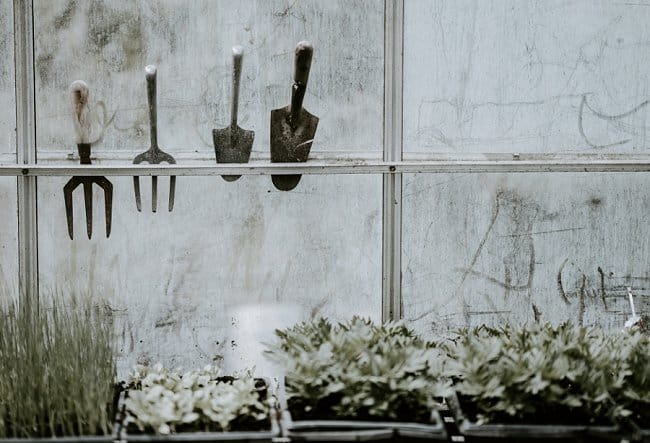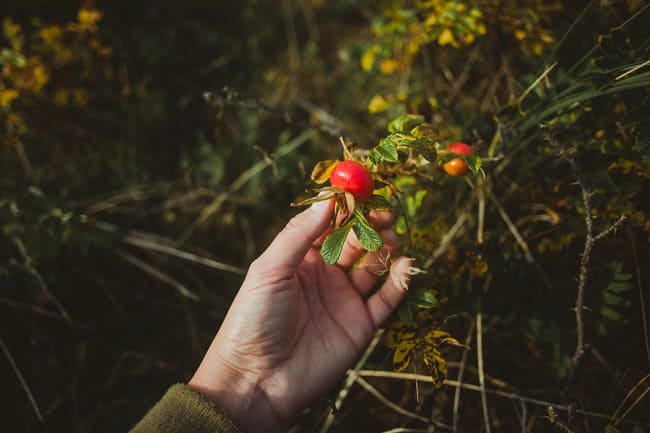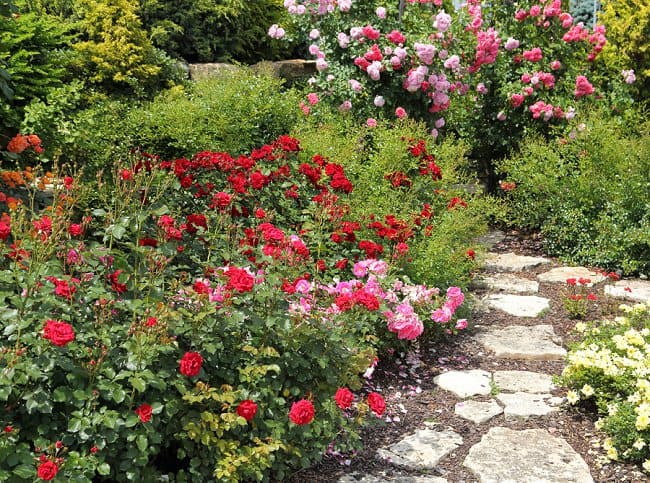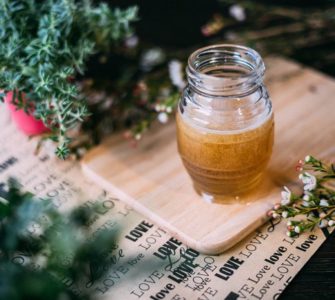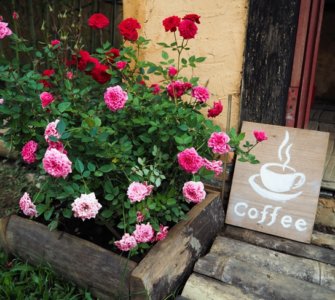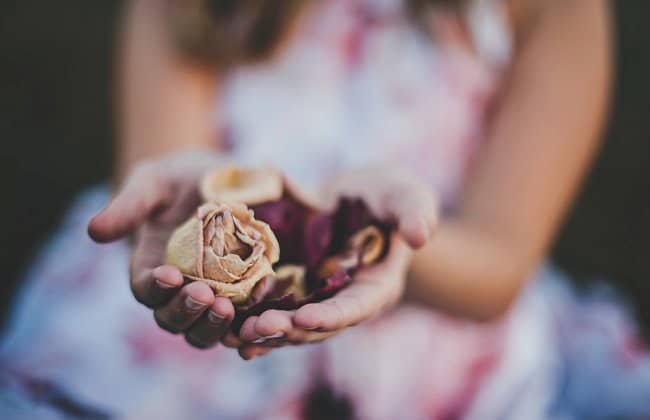
When many of us gardeners first started out, gardening seemed as easy as taking some seeds, popping them in a hole in the ground, and watering. After some time, amazing rose bushes will grow on their own, right?
– except, it’s not exactly easy as that – and you know this, if you have ever tried to grow plants from seed!
While there are many sorts of plants that will grow easily with the above method, without any concern whatsoever for how much care you give it (or don’t give it)!, there are definitely some plants that require some additional steps,which are not always obvious to an inexperienced gardener.
When learning how to grow roses from seed, you’ll quickly understand that the finicky rose plant is one of those that need those extra steps, care, and attention.
Table of Contents
Is It Easy To Grow Roses From Seeds?
Commercial roses are so often propagated from cuttings, as the success rate is generally more favourable than that of roses raised from seeds. You’re much more likely to grow roses from cuttings, and it’s easier, cheaper, and faster too.
However, while planting roses from seeds takes more time and is a bit tougher – the reason so many professional gardeners will still grow roses from seed is that the method allows you you to crossbreed roses and even grow your very own varieties.
So although growing roses from seed is more difficult than propagating roses from cuttings, if you want to create a new species, or try something new and like a challenge, growing roses from seed is for you!
It might also be possible that roses grown from seed are tougher and hardier than those propagated from stems.
At the first glance, especially if you have tried before to no avail, growing roses from seeds might seem daunting or scary – but it doesn’t need to be, as there is a fairly easy method to up the success rate of seed-growing.
What Equipment Or Tools You Will Need To Grow Roses From Seed
- vermiculite or perlite
- water
- small bowl
- spoon
- small Tupperware or similar strong plastic container/s (10 x 10 x 10 cm – condiment containers are a good choice, recycle your old kitchen waste here!)
- seeds, pre-soak them in water overnight
- label and a marker pen
- glass
- wire mesh strainer
- bigger container for transplant (or seedling tray – again kitchen waste here is your friend, I love planting mine in those cardboard egg cartons to start them off!)
- paper towel or coffee filter
- sterile seed-raising mix
How To Get Seeds From Rosehips
There are two ways you can obtain rose seeds: buy them pre-packaged from a garden store, or collect them yourself from your rose bush.
Typically, rose seeds can be found in rosehips.
A rosehip is the fruit of the rose plant – a mature ovary of the plant!
They are usually red or orange in colour, but can be dark purple or black in some varieties. They are at peak ripeness and ready for seed-gathering in late summer through autumn.
Besides giving rose seeds, they are also commonly used as a natural remedy and as a common ingredient in herbal teas.
As rosehips ripen in late summer through autumn, that is also when you should collect them to acquire seeds ready for stratification.
You can tell when a rosehip is ripe by their color, feel and appearance – they slightly resemble small cherry tomatoes when ready! A good sign of ripeness is also that they fall apart easily when you break them apart with your fingers. Make sure not to pick green rosehips, as they aren’t fully formed yet. As you are collecting them, it is good to stash them in an envelope or a paper bag and label it straight away, as to not mix it up with other rosehips you might collect.
TIP: If you have collected some rosehips a while back and forgotten about them in the meantime, they have since likely dried out. Immerse them completely in water and soak them overnight.
Cleaning The Seeds From Rosehips
Preparing The Rose Seeds
Take a glass, put the collected rosehips inside and fill the glass with water to the top in order to soak them entirely. Stir them with a spoon for several minutes, squish them slightly to relax the outer shell and leave the concoction to sit for a day or two.
Cleaning
After a few days, you will come back to a glass full of assorted mush, with seeds, pulp, stems, debris and rosehip pieces floating about in the water which will undoubtedly be coloured the same colour as the rosehips. Some of the rosehips will have remained unbroken, yet some will have completely broken down. Dispose of the ones that didn’t manage to break apart.
Take a wire mesh strainer and pour the glass with all of its contents out into the strainer. Rinse under a stream of water over a sink.
Pull out loose pulp manually, as well as the hip pieces that fell apart and any bigger stems and debris and discard them. Keep the seeds inside the strainer and give it a good rinse under a stream of water.
Spoon your seeds out and place them back into the glass while you rinse out the mesh. Pour water into the glass and stir well.
You will notice that some of the seeds will be sitting at the bottom, while a certain amount will be floating at the very top. While it’s hard to assume viability of a seed by looking only, experienced gardeners agree that the seeds floating at the surface are usually either empty, hollow or rotten. Discard all the seeds floating by scooping them out with a spoon.
Pour the water out, careful to keep the seeds at the bottom in the glass. Add fresh water into the glass, stir with a spoon for a minute or two, remove any floaters and finally, remove water from the glass. Try your best to get rid of as many debris and floaters as you can, so perform this process about 3 to 4 times. If you are pedantic and want your seeds really clean, all you need to do is rinse and repeat (literally!).
When you are done cleaning the seeds, throw out the contents of the glass into the clean strainer once again, and clean the remaining seeds under a stream of water while in the strainer.
Dry the seeds by spreading them out in the strainer with a spoon or by transferring them to a paper towel or a coffee filter.
Growing Roses From Seed – The Process
In order to make your seed growing a successful endeavor, you will need to replicate what happens to the seeds in nature. Seeds in rosehips will eventually drop to the ground from the bush and start breaking down, followed by seed pods breaking down.
As this happens in late autumn, seeds are subjected to cold and moist weather for about three months before they begin germinating in spring. This gives them an entire season ahead to establish as a strong rose plant before they have to face winter again.
During winter, seeds enter a strong dormant phase, disabling them from growing into a plant. If the seeds decided to grow as soon as the seed pods broke down, they would be growing as a young plant straight through winter, with no chance to survive.
To start your seeds, you will create artificial controlled conditions that will get the seeds to a phase of germinating over the course of two to three months.
Artificial conditions that you will create enable a similar process for planting from seed for many varieties of plants – this process is called stratification.
Stratification is a process of treating seeds to a cold environment that the seeds must experience before germination can happen, in order for dormancy to break and sprouts to occur.
Germination is the process by which an organism grows from a seed or similar structure – e.g. the sprouting of a seedling from a seed, or growing a sporeling from a spore.
What Is Seed Stratification?
In order to get your seeds to spring into life, you have to treat seeds to kind of try to ‘trick’ them into experiencing the natural conditions needed to grow.
Vermiculite and perlite are common ingredients used to help trigger the seed into life and growth!
They are available from both your local garden centre, or on Amazon or anywhere that sells garden products online. Both resemble sand in appearance, with fairly high water content. (Even though similar in appearance, you shouldn’t use actual sand! it holds too much moisture and makes the environment susceptible to rot).
1.Place vermiculite in the bowl and add several tablespoons of water to it.
Be careful not to overdo it, – you can always add more. The vermiculite should not be dry, but it should not be soaking wet either.
2.Stir the mixture around, sharing the moisture among all of vermiculite. Don’t rush this step and gently incorporate the water into all parts. Try to get even moisture without too many dry patches and add a few tablespoons of water more as necessary.
The goal is to have vermiculite be able to hold form if you take it in the palm of your hand and ball it up, but at the same time be able to fairly easily break it apart. It should feel moist to the touch, but you should be unable to squeeze any water droplets from it.
3.When the vermiculite is ready, take your Tupperware container and spread a small layer of vermiculite over the bottom so it takes up about ⅓ of the container.
4.Take your seeds and put them on top of vermiculite, spreading them out just so they are not on top of each other or in a pile. Take a few pinches of the leftover medium from the bowl and cover up the seeds, lightly pressing and evening out the surface.
5.Cover the container with a lid loosely, so the medium with seeds is covered, but there is still some air flow happening in order to prevent mold. Label the container with the rose sort, amount of seeds and the current date.
6. Put the container with the lid on in your fridge for about two or three months. Mind that the temperature of your fridge is about the same as outdoors winter temperatures in your gardening area.
What Do Germinating Rose Seeds Look Like?
After about two months have passed, start checking for any signs of germination.
Keep checking until you spot germination occuring – you will see small seed roots (radicals), about 3 centimetres in length, white and fuzzy with root hairs, emerging from the medium.
There might also be first seed leaves present, which don’t resemble rose leaves at all at this point, as they are round in appearance.
Once germination has happened, take the container out of the fridge as soon as possible and start the process of transplanting. Repotting the radical will allow it to continue germinating and start forming true leaves and look like an actual plant.
TIP: Plan beginning stratification and germination accordingly. Starting the process in late November means that stratification will end late February to early March yielding radicals for ideal repotting conditions.
However, if you spot seeds sprouting at any earlier point, make sure to immediately get them out of the fridge and into a greenhouse (even a makeshift one).
Any existing sprouts will stretch out and suffer in the fridge due to a lack of light and heat, which will lessen their viability once planted in the ground. Increase light, increase temperature and make sure not to plant directly in sunlight – give your growths some time to harden off, exposing them to sunlight briefly and more each passing day.
Transferring Rose Bush Seeds
Prepare a container to which you will transplant the radical. It should be about twice the size of your Tupperware container, and as always, the deeper – the better. If you would like, you can also use seedling trays.
Fill it with sterile seed-raising mix (which you can combine with a rose-potting mix if you desire). It is important to use a sterile mix in order to lessen the chance of a disease called “damping-off”, which might occur in improper conditions.
Make a hole in the center of the container using a stick or your finger, about 2 – 3 centimetres deep.
From a container with the radical, gently extract the seed root using a spoon end or other thin, flat tool and place it inside of the hole, caring that it is covered, but not too deep – keep it fairly close underneath the very surface of the medium.
Generally, the process of stratification will take anywhere from two to four months, and after the radical has been planted, about a year should pass before it is repotted into a bigger container.
The bigger container should be about 2 – 3 litres in volume, and the process of repotting is exactly the same.
Fertilizing Your Rose Bush Seeds
Depending on the variety of seeds you have decided to stratify, germinate and plant, growing from garden seeds means that the rose plant might self-fertilize.
In that case, the pollen will be exclusively from its own rose flowers, which is perfectly viable, and will make the resulting plant a parent, just like the one the seeds originated from. The plant will in every way be the same as its parent, same bloom, same colour and same scent and behaviour.
However, the rose plant might also be fertilized by bees, ants and other critters, which will lead to crossbreeding.
Crossbreeding occurs when there is another, similar rose nearby, similar enough to create viable offspring with our rose plant. Some resulting roses might be same colour, smell and appearance and act like its parent while others might be similar but have a different colour. The result is a bit like playing the lottery – you never know what you might get! A true representation of the parent rose plant is never guaranteed, unless you pollinate them manually.
You can create your own hybridized species by taking two rose plants and crossing them by taking pollen of one and putting it on the stigma of another’s flower, usually with a Q-tip.
DID YOU KNOW? Out of hundreds of thousands of germinating rose seeds in laboratories across the world every year, only a handful make the cut and become a David Austin Rose.
Why Rose Seeds Fail To Germinate
Don’t beat yourself up if many of your seedlings germinate improperly, or if your first stratified batch ends up unsuccessful.
Growing roses from seeds is a slow process, spanning several years to completion! It requires trial and error to get it right, so don’t get discouraged! Keep trying and adjusting the parameters as necessary – keeping a temperature of below 6 degrees Celsius while stratifying, around 20 degrees Celsius while germinating/repotting, with continued dampness and utilising a sterile seed-starting medium.
With some patience, you are certain to grow beautiful roses from seeds, maybe even some custom crossbred varieties.
So, now you know how to grow roses from seed with our easy method! If you like this post and found it useful, please do leave a comment below!
You might also find this post helpful. Aphids are one of the biggest rose killers – I’m sharing my secret recipe all-natural and organic and so-good-you-won’t-believe-it DIY make at home aphid repellent spray! Read it here, and prevent aphids from destroying your seeds and rose bushes!
